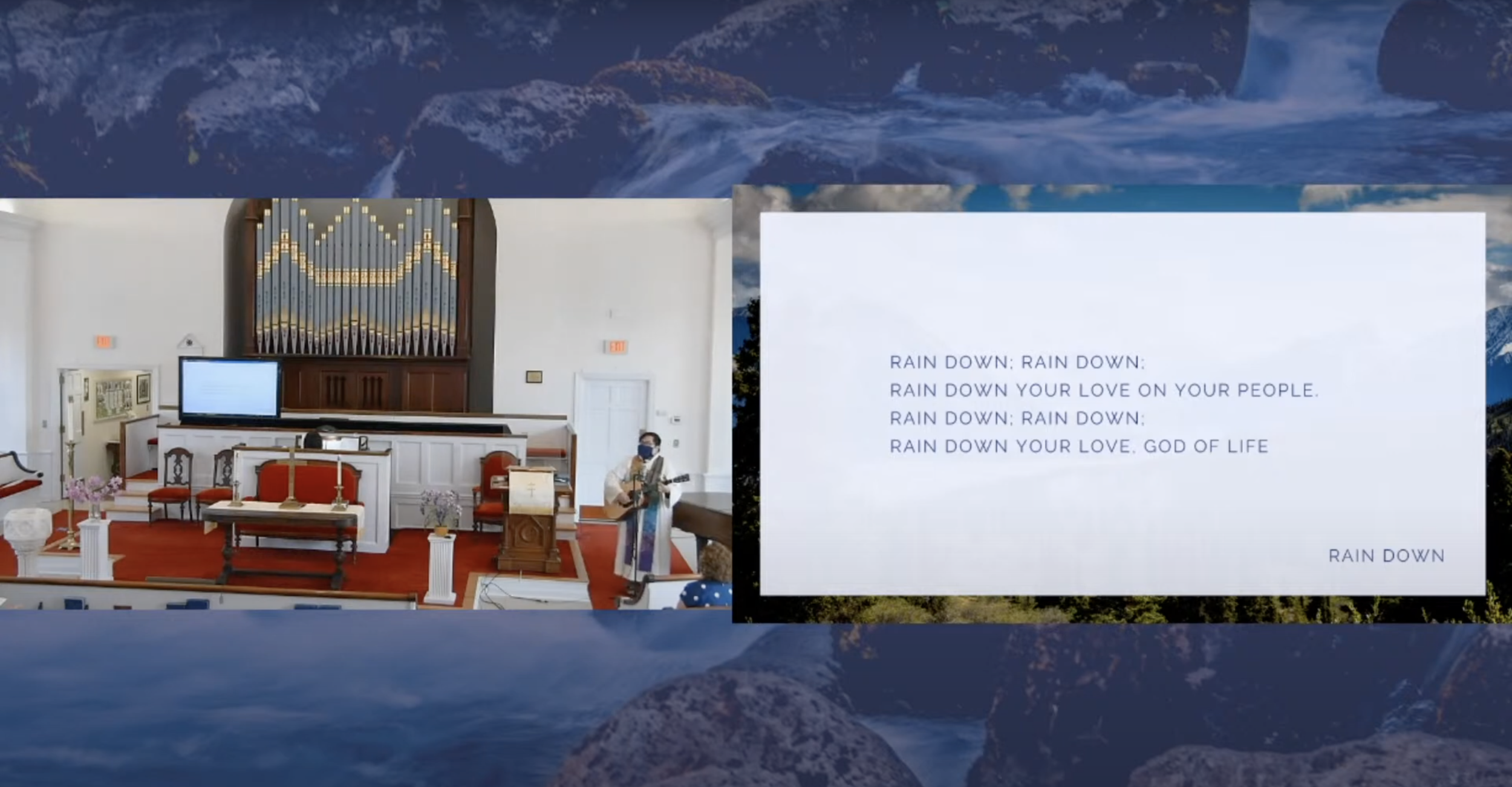Livestreaming Taught Me To Be A Better Pastor
Sunday, March 8, 2020, news of Covid-19 spread in the United States grew. Our worship attendance appeared lower than usual. Following Andrew Cuomo's deployment of the National Guard to New Rochelle, NY, I asked for a session meeting where we put an indefinite pause on in-person worship.
Sunday, March 15, 2020, I cleared any home debris from my living room, turned on the fireplace, and began our church's first purely virtual worship service. Being a slight perfectionist, I thought it could be better, but improvements were made along the way. And thanks to a presbytery grant, our church was able to buy new equipment, meaning I didn't have to use my own gear anymore (YAY!).
Today it's been over a year since we began our reinvigorated online presence. We have a camera that can capture multiple angles of our sanctuary using presets. We have an upgrade soundboard that feeds directly into our stream computer. We have a large flatscreen TV displaying worship visuals for people both in the sanctuary and at home.
Livestream Pre-Pandemic (Cellphone)
Livestream Currently (Computer, PTZ Camera, Slides, etc.)
Livestreaming enables our small/medium congregation to reach almost twice as many people as it did before. We may not see a massive influx of additional tithes, but the knowledge we are reaching more people and welcoming them is encouraging enough to keep us going. Livestreaming is not a silver bullet, it won't solve all our problems, but I believe it's the church's future. And there are a few key lessons livestreaming has taught me that have made me a better pastor.
"How you treat the camera says a lot about how you treat a stranger, visitor, or guest." It's true; your attitude to the camera in your sanctuary or home says a lot about your conscious and unconscious attitudes towards those who join you every week. If you're not enthused to invite someone to hear the good word you have to preach that week, simply because they are "watching you" and not in the building, then something needs to change. The camera is not your enemy. It's not the downfall of the church. It's a portal of invitation to gather into a time of community, even if that community is not physically connected. And if we treat the camera like a nuisance and ignore it (I mean not even looking at the camera during worship or preaching), that says something about our priorities that maybe needs to be reshaped.
"Being an active member doesn't mean you show up to a building on Sunday. Community is only limited by the imaginary boundaries we set." What is an active member? Traditional methods might say that it's the people who show up on Sunday morning. Yet if we have a large number of folks who are joining online, are they still active members? Are they still part of the community of faith? I'm asking a leading question, I know, but it's silly to think they aren't active or don't belong simply because they don't physically take a seat in the sanctuary. We have virtual greeters, virtual lectors, and people who are willing to contribute to mission projects even though they aren't nearby. As I mentioned before, community or membership is only limited by our compartmentalized way of thinking.
“Community is only limited by the imaginary boundaries we set. ”
"Nothing is ever going to be perfect, and that's okay. That's where the Spirit takes the wheel." I don't consider myself a perfectionist, but there certain things that I admittedly get too focused on, which leads to frustration. Before we upgrade our soundboard, I would spend hours and hours trying to finetune the audio level, only to find out that things didn't work. And of course, there was that time that I "yeeted" a communion chalice full of grape juice onto my living room run, but that is something I can look back on and have a good laugh. Ministry is messy, even more so when you add livestreaming to the mix. But I've come to see it as being more authentic. I don't know if I would want to watch a livestream or join a church that looked like it had all its stuff together. If I'm at a place that can accept that it makes mistakes, learns from them, and keeps on rolling, something is appealing about that. And I trust that the Holy Spirit takes everything we have to offer and works with it.
For those who still aren't sold on livestreaming worship services, there are also other pastoral applications. Think about the ways your community of faith can welcome people to funerals, baptisms, and weddings. Imagine how you might allow people to grieve and celebrate at a specific moment but might have missed it for some reason or another. Part of what I love about my current call is that I get to work with the abstract and the concrete. Ministry doesn't always produce tangible results that I like, whereas technology can be observed and witnessed. I've learned a lot this past year about myself and how I might be a better pastor from understanding ways that our church was and wasn't welcoming beforehand and how we can continue to be an evolving and dynamic faith community. I hope that throughout your journey, you've picked up a few new lessons as well.


